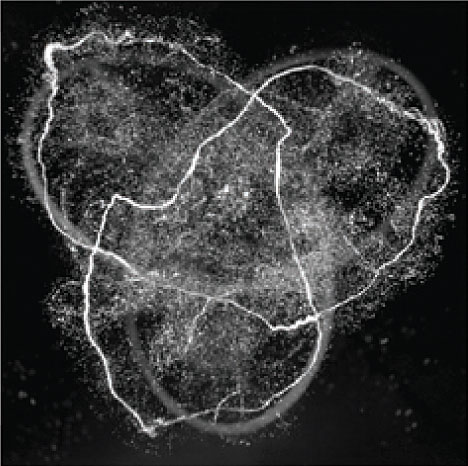A vortex knot caught on camera
DOI: 10.1063/PT.3.1970
Vortex rings pop up often in nature—perhaps most famously as smoke rings emanating from a smoker’s expert exhale, but also in the exhalations of fire eaters and underwater dolphins. More complex vortex topologies, such as interconnected rings and knots, are thought to figure prominently in turbulent flows, but they’ve proved notoriously difficult to create and study in the lab. Now, Dustin Kleckner and William Irvine of the University of Chicago have come up with a clever way to generate the elusive, self-entangled flow structures. The trick was to use a 3D printer to fashion hydrofoils whose topologies correspond to those desired of the vortices. One such hydrofoil, when placed in a water tank and given a swift tug, shed the trefoil vortex knot pictured here. (A video can be seen here.


